This bamboo has bright green to medium green leaves and,
at maturity, black culms. It originated in South China
but is now cultivated in the United States. It's common name is "Black Bamboo."
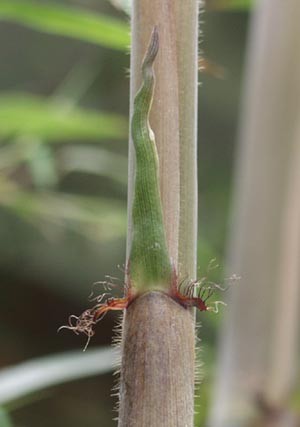
Young culm covered with overlapping culm sheaths. Visible here are the sheath, culm blade and the auricles with bristles. |
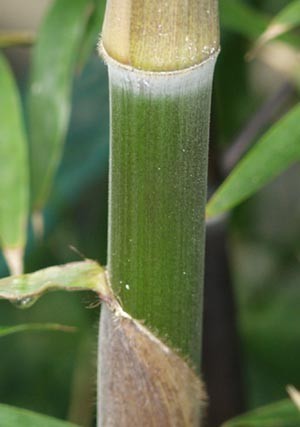
The sheaths protect the young internode. As the internode lengthens and the culm hardens the sheath falls away. |
|
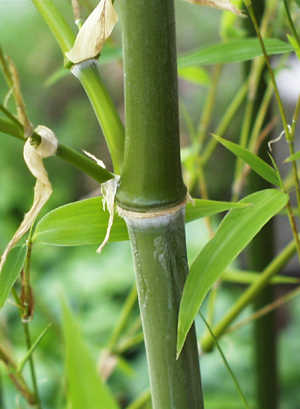
Early in the season the culms and branches are green. The culm sheath falls away from the node early on. In this photo some of the leaf sheaths are still visible |
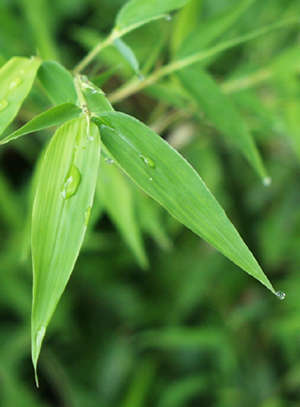
Bamboo leaves have parallel 'veins', like other grass leaves, running the entire length of the leaf. The leaf surface is coated with a waxy substance called the 'cuticle'. |
|
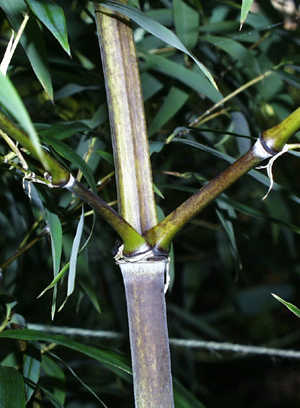
Visible in this photo is the 'sulcus', a groove running along the internodes above the side branches. These grooves exist because of the way the branch buds are formed in the developing shoot. |
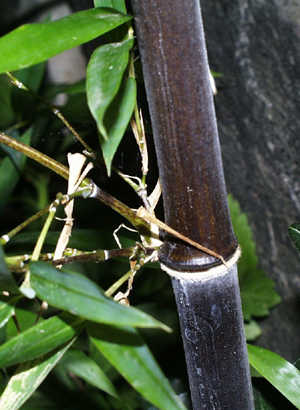
This culm, growing at a rate of 8-15 inches per day, emerged from the ground in early April 2000. Six months later, in late September, it is demonstrating the characteristic black color of Phyllostachys nigra. |
|
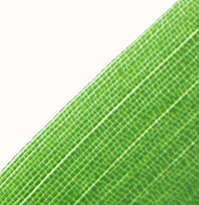 The leaf blade magnified approx 10x, and is illuminated from below to show the leaf veining in greater detail. The parallel veins are connected with cross veins running at right angles. This characteristic pattern of veining is called tessellation. |
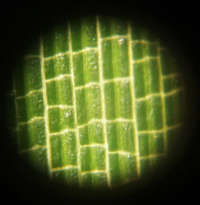 This photo, taken with a macro lens through a scope with 40x magnification with illumination from both top and bottom, shows the connecting veins running at right angles. Tessellation is considered an indication of cold hardiness in bamboo. |
|
Return to the garden page